John's C Spain news
John Muddeman
09/03/2017 20:19:27
A heatwave is currently trying to fool wildlife that winter is over. Near record temperatures in C and N Spain have brought the biological spring suddenly to life, with numerous butterflies on the wing and early-returning migrant birds.
Posted in: Flora, Butterflies and Moths, Birds, Endangered Wildlife and Habitats | Madrid | Mainland Spain, Central Spain
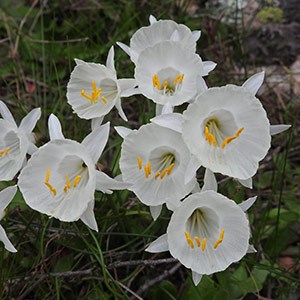 white hoop-petticoat daffodil
white hoop-petticoat daffodil
Narcissus cantabricus© John MuddemanCentral Spain 20 years ago, when I first moved here, used to be famous for the harsh winters and fierce summers. The trend, since even before then, was for an ever drier climate, and since I've been here I have witnessed how on the high peaks of the Sistema Central, particularly the highest parts of the Sierra de Guadarrama National Park (as some of it is now protected), the winter snow has been disappearing. Not only does it arrive much later -often only appearing in significant quantity from late November, rather than a month earlier as it used to- but it is noticeable how it virtually disappears between the often sudden and heavy falls associated with cooler wet fronts which pass through, at least on the south-facing slopes, rather than forming a continuous white mantle to the mountain spine.
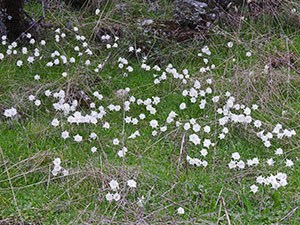 Usually scarce, thousands may emerge sometimes
Usually scarce, thousands may emerge sometimes
Narcissus cantabricus© John Muddeman
The impacts are numerous, as apperently they also are in N Spain (such as in the Picos de Europa) where the lack of winter snow cover is largely to blame for the loss of numerous 'Alpine' butterflies and plants, which have lost this protective cap, leaving them now exposed to brutal intermittent frosts during the coldest months. The lack of a protracted snow melt means the water filtering down to lower slopes, and in my case at least, feeding springs arising in the extensive dehesas of the western sierras of Madrid, combined with increasing temperatures, mean spring arrives notably earlier than it used to, though often 'falsely' early on, lasts less and gives way to hotter and longer 'summers'. If anyone doubts this, they only have to come and talk to the local livestock herders, who have noted how only over the last 30-40 years, the grass now only remains green until the end of May or sometimes into June (it used to be well into June and sometimes into July), how the summer rain storms have all but disappeared and in addition, how the first significant autumn rains can now only be 'guaranteed' from late October, rather than mid to late September...
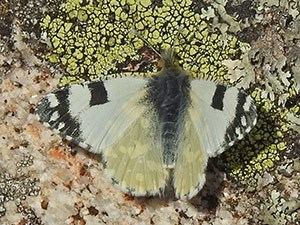 A very fresh Western Dappled White
A very fresh Western Dappled White
Euchloe crameri© John MuddemanThings have been fairly normal until now, despite the usual near-absence of snow this winter (we used to get 3-4 decent falls, at least one of these lasting for up to 2 weeks, but now rarely get any and it hardly settles for >48h), so seeing THOUSANDS of the exquisite Narcissus cantabricus in flower a couple of weeks ago, the first indicator of incipient spring for me, was no surprise. With only relatively few scattered colonies, usually containing few plants known in the Madrid province, it still pleases me to think that I discovered this huge colony by pure chance while out a couple of years ago!
But, given this sudden heatwave, being at home now instead of off on tour means making the most of it! And pipping 26ºC today (before mid March), albeit in an enclosed valley, has possibly set a new record for the area.
So believe it or not, it's already butterflying time! While just 2 weeks, or indeed 2 days ago I'd barely seen one, yesterday and today have seen a mass emergence of early species. This includes both freshly emerging individuals plus other overwintering adults of other species coming out of hibernation. And as one of my favourite local species - 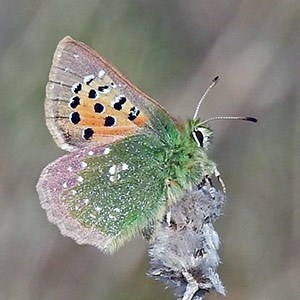 A gorgeous furry Provence Hairstreak!
A gorgeous furry Provence Hairstreak!
Tomares ballus© John MuddemanProvence Hairstreak - is one of the earliest and only appears until about mid April (in a protracted emergence year), yesterday I took out my newish Nikon P900 with the hope of snapping a few in the afternoon sunshine. In just one hour close to my kids school in good habitat, I saw at least 3, plus another 6 species!
This was good, but going down to a river valley for several hours during the early and mid afternoon with the kids (who were off school to support a nationwide teachers' strike to demonstrate against the increasing lack of support from the government of state schools), took this up to a truly exceptional 15! (Now 16 in <48h!).
So, as a bit of an aside, while I can strongly recommend the Nikon P900 for the job, I'm still struggling a bit to get the best out of it. It certainly does a far more impressive job than the (admittedly to me) rather disappointing Panasonic FZ72 I had before, and so far it's doing more or less what it says. OK, so it's quite a bit heavier and it still can't use its whopping 83x optical zoom to the full without showing soft images for the top end of the zoom, but it has such a reach that some birders are now even mounting them on tripods and using them as a substitute for their telescopes... 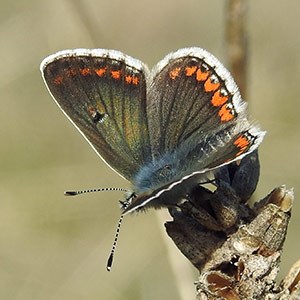 A glossy fresh Spanish Brown Argus poses nicely
A glossy fresh Spanish Brown Argus poses nicely
Aricia cramera© John MuddemanI didn't get pictures of all the butterflies, especially as many were barely stopping during the first hours of their lives as they crazily hunted for mates, but I certainly got a few, and being able to toggle quickly from macro mode to decent long-range record shots on small subjects even up to 5m or more away is very satisfying as a naturalist!
(Common Swallowtail Papilio machaon 1 added on 10th March)
Large White Pieris brassicae 2
Western Dappled White Euchloe crameri Abundant
Clouded Yellow Colias crocea 1
Brimstone Gonepteryx rhamni 1
Cleopatra Gonepteryx cleopatra 2 mm + 2 ff
Provence Hairstreak Tomares ballus 5+
Small Copper Lycaena phlaeas 6+
Holly Blue Celastrina argiolus 2
Spanish Brown Argus Aricia cramera 3
Large Tortoiseshell Nymphalis polychloros 4
Red Admiral Vanessa atalanta 1
Small Tortoiseshell Aglais urticae 3
Queen of Spain Fritillary Issoria lathonia 7+
Small Heath Coenonympha pamphilus 3
Wall Brown Lasiommata megera 1
I'm fairly sure there were one or two Small and/or Green-veined Whites (Pieris rapae / napi) and an early Common Blue (Polyommatus icarus) on the wing as well, but I didn't have time to confirm them.
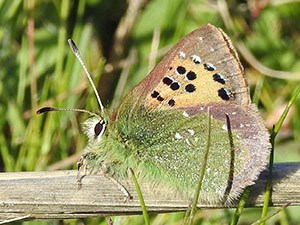 Well, I did say it's one of my favourites!
Well, I did say it's one of my favourites!
Another Provence Hairstreak
Tomares ballus© John MuddemanAfter hearing my first one yesterday, it was also fun to see my first Red-rumped Swallows of the year prospecting under a small bridge (the still increasing numbers of House Martins and Barn Swallows started arriving c. 2 weeks ago), plus seeing a couple of Great Spotted Cuckoos chasing through the Western Holm Oak trees as we drove to the valley. Indeed, birds have also been very active in the good weather of the past couple of days, with many Serins, Cirl and Rock Buntings, Woodlarks, Sardinian Warblers and other local species suddenly much more vocal and active, and aggresive territorial activity also noticeable amongst the Black Redstarts around the flat and even plenty of Spanish Imperial Eagle sightings as they reestablish their territories and intensify their nest-building activities.
This is still winter though, and while the wildlife is presumably geared up for it, it still makes me wonder how the insects in particular will survive the low temperatures we are forecast to experience next week, with several days in a row marked as dropping to near freezing and not reaching a maximum of double figures combined with over an inch of rain over 3 or 4 days. As these 'false starts' seem to be happening with increasing frequency too, will this stress the system too far and lead to a loss of some species I wonder (and fear)?
Related Information:
Want to join me on a short excursion?
Come and enjoy the region's remarkable birdlife!
Read more blog posts